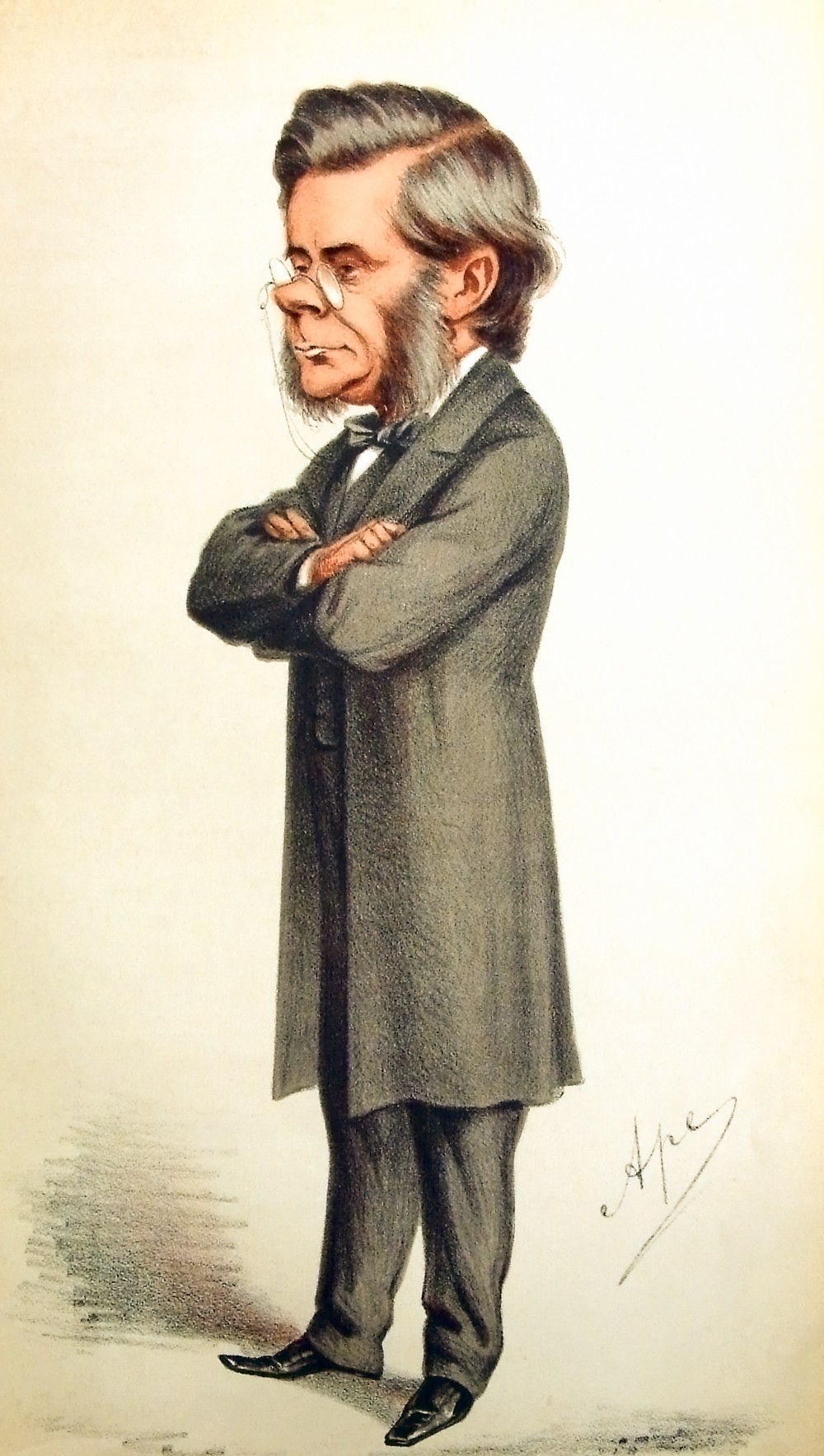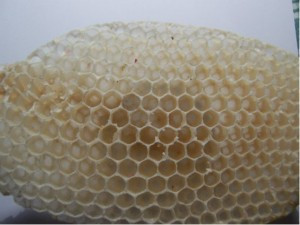To Otto Zacharias 17 April [1878]
Summary
Doesn’t know anything about the insects in question, but has sent the photographs on to an expert in London.
| Author: | Charles Robert Darwin |
| Addressee: | Otto Zacharias |
| Date: | 17 Apr [1878] |
| Classmark: | University of Southern California Libraries, Special Collections, Feuchtwanger Memorial Library (Collection no. 0204, Lion Feuchtwanger papers, Box 01) |
| Letter no: | DCP-LETT-11478F |
Matches: 1 hit
- … no. 0204, Lion Feuchtwanger papers, Box 01) Charles Robert Darwin Down 17 Apr [1878] Otto …
From Edward Cresy 10 November 1860
Summary
Explains discrepancies in weights and measures caused by changes since 1836 in apothecaries’ measures.
EC has found that a discrepancy in A. W. von Hofmann’s experiments with iodine solutions resulted from an error in Hofmann’s use of decimals.
Reports S. P. Woodward’s opinion of the Origin: "a very sad book, it unsettles all one’s religious principles and the worst of it is so much of it is true".
| Author: | Edward Cresy, Jr |
| Addressee: | Charles Robert Darwin |
| Date: | 10 Nov 1860 |
| Classmark: | DAR 58.1: 7, 9 |
| Letter no: | DCP-LETT-2980 |
Matches: 4 hits
- … of iodine in 1 kilogramme of water. i.e. .01 milligramme per gramme. [diag] The original …
- … of the solution containing therefore .01 milligramme that is 1 100 of a milligramme, & he …
- … 1000 grammes = 1 kilogramme = 1 litre—gives .01 per gramme and in this the Sec says I am …
- … to write a milligramme .001 then the D rs .01 becomes .00001 a very clumsy figure to work …
From Leonard Darwin [after 14 February 1874]
| Author: | Leonard Darwin |
| Addressee: | Charles Robert Darwin |
| Date: | [after 14 Feb 1874] |
| Classmark: | DAR 90: 8 |
| Letter no: | DCP-LETT-8709 |
To Karl von Scherzer 1 April 1878
Summary
Glad to hear of Ernst Haeckel’s reception in Vienna.
R. Virchow’s address ["Liberty of science", Nature 17 (1877–8): 72–4, 92–4, 111–13] very arrogant.
Sorry to hear of death of Arthur Lane.
| Author: | Charles Robert Darwin |
| Addressee: | Karl von Scherzer |
| Date: | 1 Apr 1878 |
| Classmark: | University of Southern California Libraries, Special Collections, Feuchtwanger Memorial Library (Collection no. 0204, Lion Feuchtwanger papers, Box 01) |
| Letter no: | DCP-LETT-11460 |
Matches: 1 hit
- … no. 0204, Lion Feuchtwanger papers, Box 01) Charles Robert Darwin Down 1 Apr 1878 Karl von …
To J. S. Burdon Sanderson 30 April [1876]
Summary
Suggests JSBS’s new machine for observing arterial action be used to test CD’s hypothesis that blushing is caused by thinking intensely about a part of the body and thus releasing the arteries.
| Author: | Charles Robert Darwin |
| Addressee: | John Scott Burdon Sanderson, 1st baronet |
| Date: | 30 Apr [1876] |
| Classmark: | University of British Columbia Library, Rare Books and Special Collections (Darwin - Burdon Sanderson letters RBSC-ARC-1731-1-01) |
| Letter no: | DCP-LETT-10485 |
Matches: 1 hit
- … Burdon Sanderson letters RBSC-ARC-1731-1-01) Charles Robert Darwin London, Queen Anne St, …
From J. V. Carus 19 March 1876
Summary
Insectivorous plants is out
and Climbing plants is at the printer’s.
He is now at work on the geological writings.
Thinks all of CD’s papers extremely interesting "for the spirit and the method".
Cites some misprints in Climbing plants.
| Author: | Julius Victor Carus |
| Addressee: | Charles Robert Darwin |
| Date: | 19 Mar 1876 |
| Classmark: | DAR 161: 103 |
| Letter no: | DCP-LETT-10419 |
Matches: 1 hit
- … P. 58 l. 12 from bottom read 8,1 mg for 8, 01 mg. Do you happen to have a bound copy of …
| Darwin, C. R. | (3) |
| Carus, J. V. | (1) |
| Cresy, Edward, Jr | (1) |
| Darwin, Leonard | (1) |
| Darwin, C. R. | (3) |
| Burdon Sanderson, J. S. | (1) |
| Scherzer, Karl von | (1) |
| Zacharias, Otto | (1) |
| Darwin, C. R. | (6) |
| Burdon Sanderson, J. S. | (1) |
| Carus, J. V. | (1) |
| Cresy, Edward, Jr | (1) |
| Darwin, Leonard | (1) |
Featured in Commentary

Darwin in letters, 1880: Sensitivity and worms
Summary
‘My heart & soul care for worms & nothing else in this world,’ Darwin wrote to his old Shrewsbury friend Henry Johnson on 14 November 1880. Darwin became fully devoted to earthworms in the spring of the year, just after finishing the manuscript of…

The Lyell–Lubbock dispute
Summary
In May 1865 a dispute arose between John Lubbock and Charles Lyell when Lubbock, in his book Prehistoric times, accused Lyell of plagiarism. The dispute caused great dismay among many of their mutual scientific friends, some of whom took immediate action…

Darwin in letters, 1868: Studying sex
Summary
The quantity of Darwin’s correspondence increased dramatically in 1868 due largely to his ever-widening research on human evolution and sexual selection.Darwin’s theory of sexual selection as applied to human descent led him to investigate aspects of the…

Darwin in letters, 1876: In the midst of life
Summary
1876 was the year in which the Darwins became grandparents for the first time. And tragically lost their daughter-in-law, Amy, who died just days after her son's birth. All the letters from 1876 are now published in volume 24 of The Correspondence…
Matches: 1 hits
- … was reluctant to do so, as he confessed to Darwin on 1 June : ‘the heat of battle is not the time …

Darwin in letters, 1875: Pulling strings
Summary
‘I am getting sick of insectivorous plants’, Darwin confessed in January 1875. He had worked on the subject intermittently since 1859, and had been steadily engaged on a book manuscript for nine months; January also saw the conclusion of a bitter dispute…
Matches: 0 hits

Darwin in letters, 1878: Movement and sleep
Summary
In 1878, Darwin devoted most of his attention to the movements of plants. He investigated the growth pattern of roots and shoots, studying the function of specific organs in this process. Working closely with his son Francis, Darwin devised a series of…
Matches: 0 hits

Darwin in letters, 1856-1857: the 'Big Book'
Summary
In May 1856, Darwin began writing up his 'species sketch’ in earnest. During this period, his working life was completely dominated by the preparation of his 'Big Book', which was to be called Natural selection. Using letters are the main…

Darwin in letters, 1879: Tracing roots
Summary
Darwin spent a considerable part of 1879 in the eighteenth century. His journey back in time started when he decided to publish a biographical account of his grandfather Erasmus Darwin to accompany a translation of an essay on Erasmus’s evolutionary ideas…
Matches: 1 hits
- … well known philosopher and poet’ ( Correspondence vol. 1, letter from Francis Beaufort to …

British Association meeting 1860
Summary
Several letters refer to events at the British Association for the Advancement of Science held in Oxford, 26 June – 3 July 1860. Darwin had planned to attend the meeting but in the end was unable to. The most famous incident of the meeting was the verbal…
Matches: 1 hits
- … Lives and letters : Thomas Henry Huxley (L. Huxley 1900, 1: 179–89); Joseph Dalton Hooker (L. …
Darwin in letters, 1877: Flowers and honours
Summary
Ever since the publication of Expression, Darwin’s research had centred firmly on botany. The year 1877 was no exception. The spring and early summer were spent completing Forms of flowers, his fifth book on a botanical topic. He then turned to the…
Matches: 1 hits
- … red cabbage were traced over time: ‘Bristle was gummed to 1 Cot. & beyond it a triangular bit of …

Biodiversity and its histories
Summary
The Darwin Correspondence Project was co-sponsor of Biodiversity and its Histories, which brought together scholars and researchers in ecology, politics, geography, anthropology, cultural history, and history and philosophy of science, to explore how…
Matches: 1 hits
- … and Humanities (CRASSH), Cambridge. Session 1: Experience and Representation Chair: Paul …

Darwin in letters, 1863: Quarrels at home, honours abroad
Summary
At the start of 1863, Charles Darwin was actively working on the manuscript of The variation of animals and plants under domestication, anticipating with excitement the construction of a hothouse to accommodate his increasingly varied botanical experiments…
Matches: 0 hits

Darwin in letters, 1847-1850: Microscopes and barnacles
Summary
Darwin's study of barnacles, begun in 1844, took him eight years to complete. The correspondence reveals how his interest in a species found during the Beagle voyage developed into an investigation of the comparative anatomy of other cirripedes and…
Matches: 4 hits
- … in little frequented countries.’ ( Collected papers 1: 228). Not surprisingly, the leading …
- … of the geological results of the Beagle voyage, on 1 October 1846, Darwin at last found time to …
- … the ‘curious’ genus Sagitta ( Collected papers 1: 177–82) and another on marine and terrestial …
- … His Beagle diary of zoological observations (DAR 31.1: 305–8) contains a description, dated 8 …

The evolution of honeycomb
Summary
Honeycombs are natural engineering marvels, using the least possible amount of wax to provide the greatest amount of storage space, with the greatest possible structural stability. Darwin recognised that explaining the evolution of the honey-bee’s comb…

Darwin on marriage
Summary
On 11 November 1838 Darwin wrote in his journal ‘The day of days!’. He had proposed to his cousin, Emma Wedgwood, and been accepted; they were married on 29 January 1839. Darwin appears to have written these two notes weighing up the pros and cons of…

The death of Anne Elizabeth Darwin
Summary
Charles and Emma Darwin’s eldest daughter, Annie, died at the age of ten in 1851. Emma was heavily pregnant with their fifth son, Horace, at the time and could not go with Charles when he took Annie to Malvern to consult the hydrotherapist, Dr Gully.…

Natural selection
Summary
How do new species arise? This was the ancient question that Charles Darwin tackled soon after returning to England from the Beagle voyage in October 1836. Darwin realised a crucial (and cruel) fact: far more individuals of each species were born than…
Matches: 1 hits
- … How do new species arise? This was the ancient question that Charles Darwin tackled soon after …

Darwin in letters, 1837–1843: The London years to 'natural selection'
Summary
The seven-year period following Darwin's return to England from the Beagle voyage was one of extraordinary activity and productivity in which he became recognised as a naturalist of outstanding ability, as an author and editor, and as a professional…
Matches: 1 hits
- … on the parallel roads of Glen Roy’, Collected papers 1: 88–137). Darwin later abandoned this …

Darwin in letters, 1844–1846: Building a scientific network
Summary
The scientific results of the Beagle voyage still dominated Darwin's working life, but he broadened his continuing investigations into the nature and origin of species. Far from being a recluse, Darwin was at the heart of British scientific society,…
Matches: 1 hits
- … vol. 2, letter to A. Y. Spearman, 9 October 1843, n. 1). Darwin's inner circle: first …

The writing of "Origin"
Summary
From a quiet rural existence at Down in Kent, filled with steady work on his ‘big book’ on the transmutation of species, Darwin was jolted into action in 1858 by the arrival of an unexpected letter (no longer extant) from Alfred Russel Wallace outlining a…



